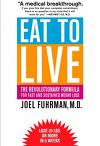(We used 3T looseleaf Gunpowder green tea)
Friday, October 29, 2010
Kombucha
The kombucha "mushroom" is actually a symbiotic colony of yeast and bacteria acts on sugar and tea to produce acetic and lactic acid, also small amounts of a potent detoxifying glucuronic acid. Normally this organic acid is produced in the liver in sufficient quantities to neutralize toxins in the body. This additional glucuronic acid is said to be a powerful aid to the body's natural cleansing process, a boost to the immune system and a proven prophylactic against cancer and other degenerative diseases.
3 quarts filtered water
1 cup sugar
4 tea bags of black or green tea
1/2 c kombucha from a previous culture
1 kombucha "mushroom"
Bring water to boil. Add sugar and simmer until dissolved. Remove from heat, add the tea. Allow the tea to steep until water has completely cooled. Remove tea leaves. Pour cooled liquid into a 4-quart pyrex bowl and add 1/2 cup kombucha from previous batch. Set mushroom on top of the liquid. Make a criss-cross over the bowl with masking tape, cover loosely with a cloth or towel and transfer to a warm, dark place, away from contaminants and insects. In about 7 to 10 days the kombucha should be ready. [Regina let ours ferment for 14 days. It is perfect.] It should be rather sour and possibly fizzy, with no taste of tea remaining. Transfer to a covered glass pitcher or jar and store in the refrigerator. (Note: Do not wash kombucha bowls in the dishwasher.)
When the kombucha is ready, your mushroom will have grown a second spongy pancake. This can be used to make other batches or given away to friends. Store fresh mushrooms in the refrigerator in a glass or stainless steel container-never plastic. A kombucha mushroom can be used dozens of times. If it begins to turn black, or if the resulting kombucha doesn't sour properly, it is a sign that the culture has become contaminated. When this happens, it's best to throw away the mushroom and order a new clean one.
Note: White sugar, rather than honey or Rapadura and black tea, rather than flavored teas, give the highest amounts of glcuronic acid. Non-organic tea is high in fluoride so always use organic tea.
Some individuals may have an allergic reaction to kombucha. If you have allergies, start with a small taste to observe any adverse effects. If so, use beet kvass (pg. 608 of Nourishing Traditions) several weeks to detoxify and then try again.






























































2 comments:
And believe it or not, it actually tastes good too! I love how when I see a bag of white sugar at certain people's homes, I automatically know they're brewing up a batch of kumbacha!
thanks for the specifics... I've not yet seen the actual method spelled out so clearly.
I am curious about one thing.... the statement that non-organic tea is high in fluoride, thus indicating the use of organic tea. Being in the tea business, and having studied this sort of thing somewhat, I can see no reason this is universally true. Many non-certified teas are grown the same traditional ways in use for three thousand years.... those that opt too get certified as Organic producers make NO changes, their methods are so clean. Perhaps the standard bagged grocery store teas might have fluoride contamination somehow from their processing... any idea why this assertion was made, and its ultimate source? I would like to follow this out.
thanks
Post a Comment